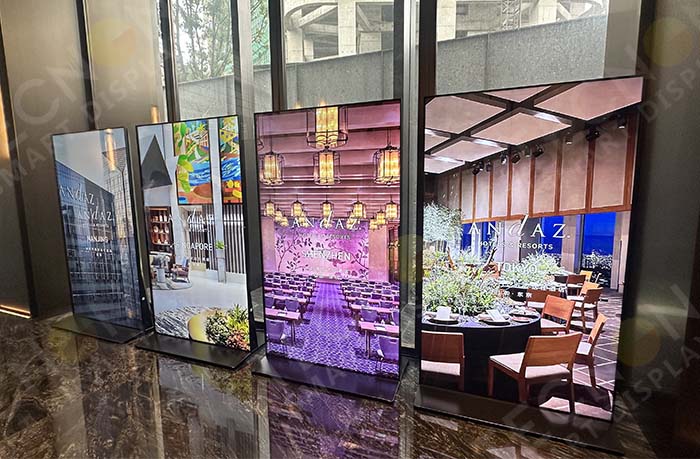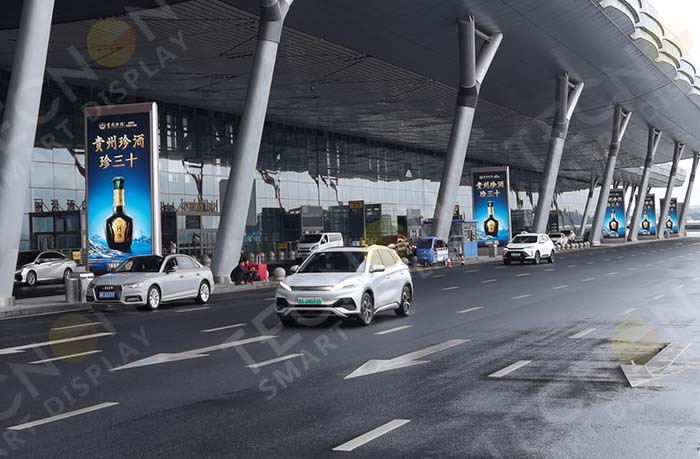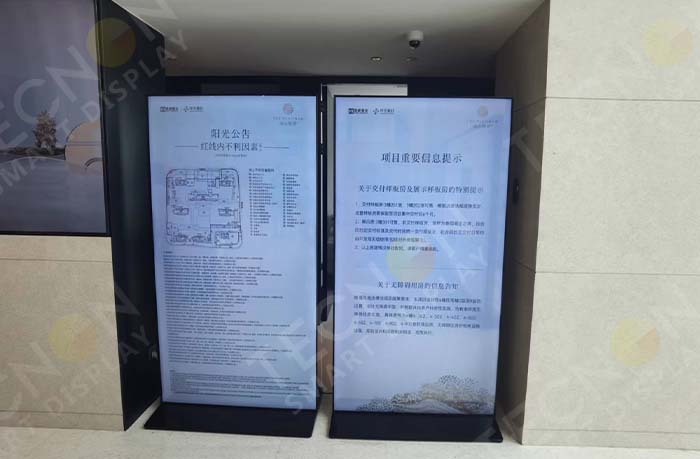When people think about LCD signage, they often imagine shopping malls, airports, or train stations. But the technology is far from outdated. Despite the growing dominance of LED displays, LCD board continues to play a vital role in digital communication. Its strength lies in short-distance clarity, affordability, and flexibility—qualities that make it valuable in ways LED technology cannot always replace.
The Unique Role of LCD Signage in Modern Life
In many community spaces, you’ll find LCD displays on bus stops, notice boards, and kiosks. These screens serve close-up viewers who need crisp text and detailed graphics. Unlike LED billboards designed to be seen from afar, LCD screen thrives when accuracy and readability matter at arm’s length.
Think of a digital menu in a restaurant or a hospital directory in a crowded lobby. In these cases, sharp fonts and fine details are critical. LCD panels deliver exactly that.

Why LCD Signage Excels at Close Viewing
Clarity is where LCD displays shine. Their higher pixel density ensures text, icons, and intricate graphics remain easy to read even a few inches away. That’s why they dominate applications like:
- Electronic menu boards in cafés and fast-food restaurants
- Interactive kiosks in malls and transit stations
- Point-of-sale advertising screens in retail
- Healthcare information panels in hospitals and clinics
LED displays can also handle close-range content when built with fine-pitch modules, but these solutions are often more expensive. For small to mid-sized indoor screens, LCD signage provides sharper performance at a lower price.
LCD Signage vs. LED Signage: Making the Right Choice
Both display types serve digital communication well, but their strengths differ.
- Viewing Distance:
- LCD signage is best for short-range use, such as menus, kiosks, or retail ads where people stand within one to three meters.
- LED signage dominates long-range visibility in stadiums, highways, and plazas. However, fine-pitch LEDs (like P1.2 or smaller) are now suitable for indoor close viewing, including classrooms and conference rooms.
- Clarity and Color:
- LCD delivers excellent text readability and accurate detail, making it ideal for information-heavy content.
- LED provides brighter colors and stronger contrast, which creates a more visually striking experience, especially in outdoor or large-scale environments.
- Cost Advantage:
- LCD signage usually has the price advantage for small to medium displays, making it accessible for cafés, retailers, and offices.
- LED signage requires a higher initial investment, especially for fine-pitch displays, but offers scalability for massive installations.

Quick Comparison
| Feature | LCD Signage | LED Signage |
|---|---|---|
| Viewing Distance | Short-range (menus, kiosks, retail, healthcare) | Long-range (stadiums, highways); fine-pitch LEDs now viable indoors |
| Clarity & Text | Sharp detail and accurate fonts up close | Clear at a distance; fine-pitch LEDs rival LCDs indoors |
| Color & Contrast | Consistent and precise, great for information | Vibrant colors and high brightness for impact |
| Cost | Lower cost, easier for small-scale deployment | Higher upfront cost, premium for fine-pitch models |
| Best Use Cases | Restaurants, hospitals, retail, offices | Billboards, arenas, plazas, large video walls |
Why Businesses Still Choose LCD Display
For many businesses, LCD is not just about affordability—it’s about reliability. Retailers prefer it for quick promotions, cafés rely on it for dynamic menus, and hospitals use it for wayfinding. In all these cases, content must remain readable at close range.
Another factor is adaptability. LCD signage supports frequent content changes without the cost of printing posters or banners. This not only saves money but also reduces waste, aligning with sustainable business practices.

Emerging Applications of LCD Signage
LCD screen is appearing in more innovative ways than ever before:
- Education: Campuses use digital kiosks to guide new students, share events, and update schedules.
- Smart cities: LCD displays on bus shelters and public boards provide real-time traffic, weather, and community alerts.
- Healthcare: Clinics integrate LCD screens with health apps to deliver personalized wellness messages.
These applications prove that LCD technology remains relevant in a world where LEDs often dominate headlines.

Conclusion
LCD signage may not be as bright as LED billboards, but it holds a clear edge in short-range, detail-oriented communication. For restaurants, hospitals, retail shops, and offices, it combines sharpness, affordability, and adaptability. Meanwhile, LED signage excels outdoors and in large venues, offering unmatched brightness and color impact.
The future of digital signage is not LCD versus LED—it’s LCD and LED working together, each in the environments where they perform best. For businesses seeking cost-effective, reliable, and detail-focused displays, LCD display continues to be a smart and practical choice.
FAQs
Q1: What is LCD signage used for?
LCD signage is mainly used for short-range applications such as digital menu boards, kiosks, hospital directories, and retail displays. It offers sharp detail and clear text, making it ideal for close viewing.
Q2: How does LCD panel differ from LED?
LCD signage excels at close-range readability and is generally more cost-effective, while LED signage provides higher brightness and is better for long-distance visibility. Fine-pitch LEDs can also handle indoor close viewing but at a higher cost.
Q3: Is LCD board more affordable than LED signage?
Yes. LCD usually has a lower upfront cost, especially for small to medium-sized screens. This makes it a practical choice for businesses like restaurants, hospitals, and shops that need clear communication without the higher investment of LED displays.
 Tecnon Smart Display Technology Shenzhen Co., Ltd.
Tecnon Smart Display Technology Shenzhen Co., Ltd.